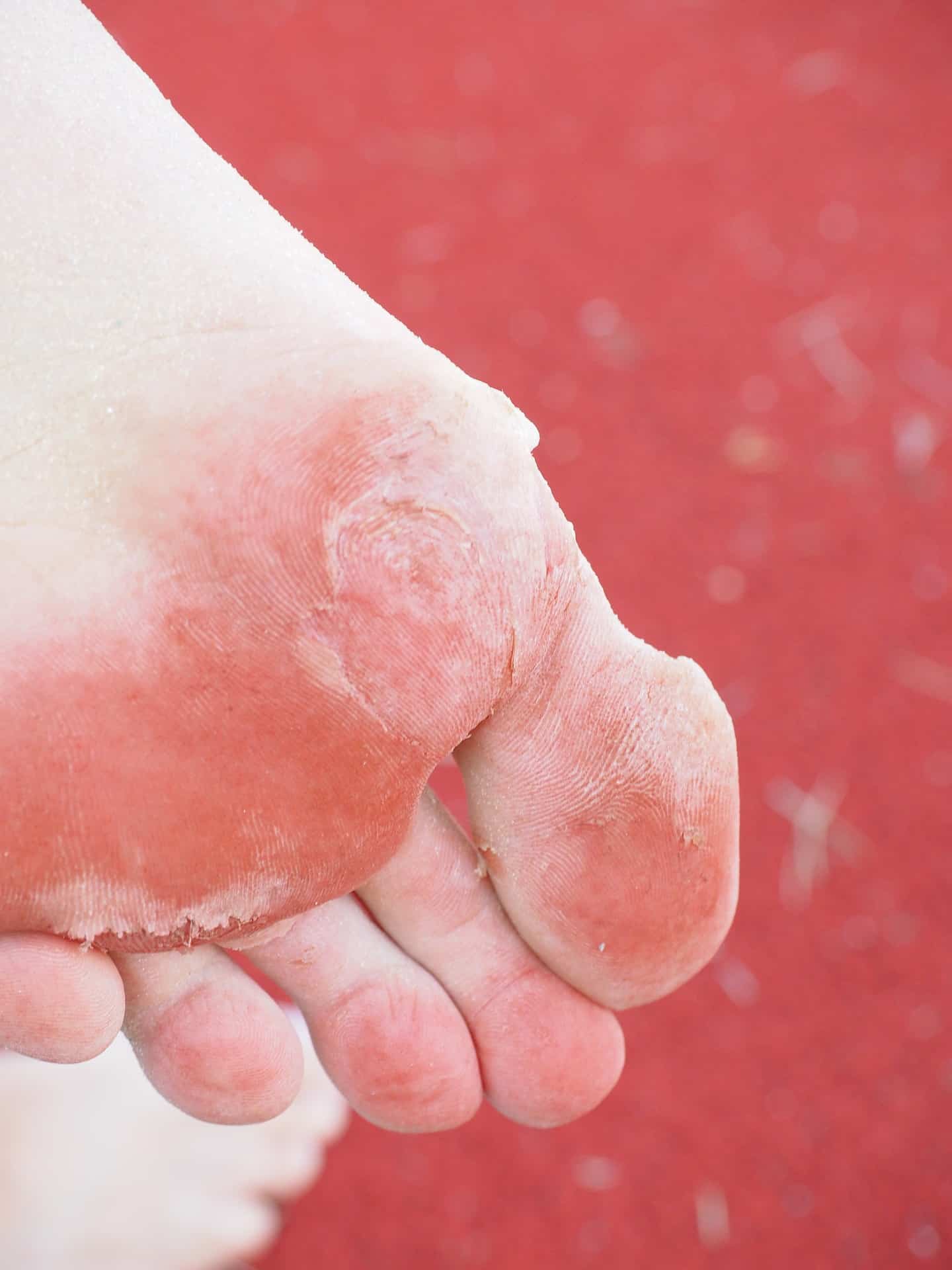The areas of skin that are damaged because of staying at one place for a long time are known as pressure sores. These are more likely to occur in the muscular area of your bones. These include:
- Ankles
- Back
- Elbows
- Heels
- Hips
Etc. If in case you are bedridden you are at risk of developing bedsores.
How Do Pressure Sores Develop in The Heels?
Like normal pressure sores, heel ulcers or you may say heel pressure sores are extremely painful and the area where they develop become red. However, these can be treated if the feet are elevated at all times. You should avoid wearing tights and stockings however if you do you need to adjust them properly so that they don’t cause irritation on your heels while the pressure sores are being treated.
These injuries are tissue injuries that cause ulcers and they look as if the part of the skin is bruised. The skin may appear purple or blue depending upon the severity of your sore. No pressure should be applied to your feet where the pressure sore is so as to aid in healing the skin.
Symptoms of Pressure Sores
Pressure sores occur in the part of the body that are always or most of the times under pressure. Most commonly the bony areas of the body. Symptoms of pressure sores on heels are observed as follows:
- The skin where the pressure sores develop start to become discoloured
- The discoloured patches when touched do not turn white. This shows the severity of the pressure sore
- The discoloured patch of skin becomes hard at times
- You feel pain in the area
- The skin may be itchy
- The pressure ulcer may appear as a wound
- The wound gets deeper by the day and affects the layers of skin beneath as well
- After the skin, it starts to affect the bone
Pressure Sores On Heels Treatment

There are a number of ways of treating pressure sores. Their effectiveness depends on how the patient follows your advice and caters the wound and the pressure sore on your heels.
You can cater and treat your pressure sores in the following ways:
Bandage and Dressing
There are special dressings and bandages that are custom made for the patients who are suffering heel pressure sores. These are exclusively designed to aid in the treatment and healing process. There are three common types of dressings that are used when it comes to treating heel pressure sores:
Hydrocolloid Dressings
This special type of dressing is composed of a kind of a gel that helps in the growth and development of new skin cells in the affected area. This also helps to prevent the already available healthy skin from getting affected by the ulcer.
Alginate Dressings
This special kind of dressing is made by using seaweed. The main constituents of this dressing are sodium and calcium that are very much known for their healing process.
Some other dressing types include:
- Hydro fibres
- Antimicrobial dressings
- Foams and films
Etc. The kind of dressing that has to be used for your heel pressure sore needs to be decided by the medical care centre. They decide this upon seeing the situation of your pressure sore or the wound.
Medicinal Ointments
Medicinal ointments aren’t usually recommended for pressure sores as they are not that effective in this case. However, these may be used as a film or a protective covering to prevent irritation and itching.
Drugs
The drugs that are mostly prescribed for the treatment of heel pressure sores are antibiotics. These are the best when it comes to treating the infected areas or the pressure sores in case it gets serious and cause elevated issues. Antibiotics are prescribed in cases such as:
- Sepsis
- Cellulitis
- Osteomyelitis
Nutrition
Other than medicines treating heel pressure sores also requires you to eat a healthy diet. This means that your diet should include a good amount of proteins, a wide variety of vitamins and certain minerals as well. Consuming a healthy diet with these elements are for sure going to help heal the pressure sores. You can always go to a nutritionist and consider getting help from them when it comes to deciding what to include in your diet. They can come with a diet plan that is suitable for your health and would aid in the effective treatment of the pressure sores.
Hydration
the most important and foremost thing, when it comes to treating pressure sores include drinking lots and lots of water. Staying hydrated can help with treating the pressure sores.
Lack of water in your body can interfere with the healing process.
In order to treat pressure sores, you need to focus on all these factors so as to aid in the treatment process. You may also make use of products made of medical sheepskin as they are known to be the best for pressure sores.
Conclusion
The comorbidities and risk factors associated with heel pressure ulceration are common among hospitalized individuals and include immobility and resultant pressure, skin condition (eg, moisture level), poor perfusion, friction, and shear forces.
However, heel ulcers can be prevented if pressure is completely alleviated. Heel offloading devices are easier to manage than pillows but it is critically important to completely relieve pressure from the heels without causing pressure in other areas.


I have been using vitamin E on a heel pressure sore. It has now broken open and starting to ooze. Is the vitamin E causing the oozing?
[…] STIs can cause either painful or painless “lesions” which could appear as lumps, blisters, or sores on your skin. For instance, syphilis can cause one or more painless sores—also known as ulcers. […]
[…] transmission. For instance, if your partner kept her underwear on but had an exposed, open syphilis sore, rubbing your penis on it could lead to you getting […]